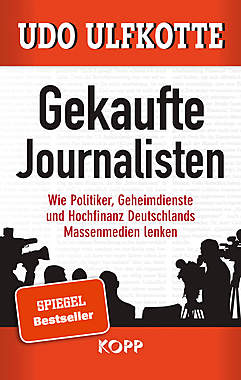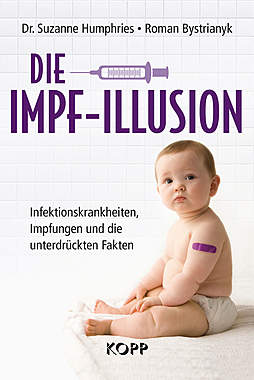- C. Baum Greenspans legacy - CRASH_GURU, 05.10.2005, 06:47
C. Baum Greenspans legacy
-->Greenspan, Term Ending, Returns to Randian Roots: Caroline Baum
2005-10-03 00:02 (New York)
(Commentary. Caroline Baum, author of ``Just What I Said,''
is a columnist for Bloomberg News. The opinions expressed are her
own.)
By Caroline Baum
Oct. 3 (Bloomberg) -- In the autumn of his life as Federal
Reserve chairman, Alan Greenspan is thinking about his legacy.
He's not alone. Last month, at the Kansas City Fed's annual
Jackson Hole symposium, Greenspan was toasted as ``the greatest
central banker who ever lived'' by Princeton University's Alan
Blinder and other notables who trekked to the Grand Tetons in the
hope some of his greatness would rub off on them.
Greenspan surely wants to have some say in how he'll be
remembered. Perhaps that's why, with one burst bubble under his
belt and a potential one still inflating, he returned to his
philosophical roots in a speech last week to the National
Association of Business Economics annual meeting in Chicago.
You wouldn't have seen any reference to it in the media
coverage. And understandably so. There was no market-moving news
in the first two-thirds of his speech.
Instead, Greenspan provided a brief history of the changing
attitudes toward the government's role in the economy: the free-
market capitalism of Adam Smith that prevailed in the 19th and
early 20th centuries; the attempt at interventionist, demand-side
management advocated by John Maynard Keynes during the 1930s
Depression, when the market system seemed to fail to restore the
economy to full employment; the resultant stifling of competition
and economic stagnation of the 1970s; the failure of wage and
price controls and eventual disillusion with regulation; and the
ultimate triumph of free markets when ``the collapse of the
Berlin Wall in 1989 exposed the economic ruin behind the Iron
Curtain,'' Greenspan said.
Commanding Heights
It was ``Atlas Shrugged'' without Dagny Taggart and Hank
Reardon to lead us through the struggle.
Greenspan was present at the creation of Ayn Rand's
masterpiece as part of the free-market philosopher's inner circle
in the 1950s. It makes perfect sense that as he gets ready to
retire from the Fed on Jan. 31, Greenspan would create an
idealized image of himself, even if it differs from reality.
The last third of Greenspan's speech last week -- the one
that got media attention -- was less impressive and much less
noble. He left Ms. Rand to fend for herself as he stepped into
his role of government bureaucrat.
Greenspan's thesis, if you could call it that, was that
successful economic policy, including the monetary management to
which he is entrusted, leads to nutty behavior on the part of
investors.
Good Is Bad?
Yes, that's right. If the Fed does its job in providing an
environment of low inflation, the economic stability it engenders
leads to ``market exuberance,'' Greenspan said, implying the
behavior is rational even if it's frivolous.
``Why would a better economic environment cause investors to
be more careless?'' asked Jim Glassman, senior U.S. economist at
JPMorgan Chase & Co. ``A true Randian would have total trust in
individual judgments.''
Perhaps investors are induced to be more careless by the
presence of a safety net. Greenspan's risk-management approach to
policy-making implies acting to offset the biggest risks and
protect the biggest risk-takers. Like the doctrine of ``too big
to fail,'' it suggests that if you are going to roll the dice in
a big way, make sure any failure creates a systemic risk to
ensure government intervention.
Greenspan's 18-year tenure at the Fed has been characterized
by multiple such interventions, the kind his mentor would have
despised.
The `Greenspan Put'
Consider that the ``Greenspan put'' has become as much as
part of the lexicon as the maestro's own popularized inventions,
such as ``irrational exuberance'' and ``economic headwinds.''
A put option gives the buyer the right to sell a security,
index or futures contract at a specific price by a specific date.
Buying a put protects the holder against a decline in prices.
After multiple rescue efforts -- Greenspan cut rates in 1995
following the Mexican peso crisis and Orange County blowup and
again in 1998 in response to the near-collapse of hedge fund Long-
Term Capital Management -- investors began to refer to, and rely
on, the Greenspan put as an implicit guarantee that the Fed would
cut rates if things got too dicey for the stock market.
``He has been willing to ease, and ease aggressively,
thereby creating the right financial conditions for a mania,''
said Bill Fleckenstein, president of Fleckenstein Capital in
Seattle, who has painstakingly documented Greenspan's bad
forecasts over the years. (Think ``Whip Inflation Now'' in 1974.)
Proud Parent
While Greenspan's topic last week was ostensibly how greater
flexibility has enabled the U.S. economy to handle shocks, the
speech was really ``an attempt to rewrite history and can only be
titled, `Damn, I'm Good,''' Fleckenstein said. For example,
Greenspan went out of his way to remind us that the Fed was
uncomfortable ``with a stock market that appeared as early as
1996 to disconnect from its moorings.''
The Fed chief has been spending more time of late on the
possibly unmoored housing market than on any irrational pricing
in the equity market. (Last week, the Fed published a working
paper co-written by Greenspan on home equity extraction.) He must
know ``the stock market is not valued any differently now than it
was in 1996,'' Glassman said.
The price-to-earnings ratio of the Standard & Poor's 500
Index averaged 19.21 in 1996 compared with 19.59 in the first
nine months of 2005. In other words, if it was disconnected then,
it's disconnected now.
Does that mean that both home and equity prices are detached
from the fundamentals?
Rand believed that individuals, including investors, act in
their own self-interest. Greenspan is certainly acting in his. On
that score, at least, his mentor would be proud.
gesamter Thread:
 Mix-Ansicht
Mix-Ansicht

